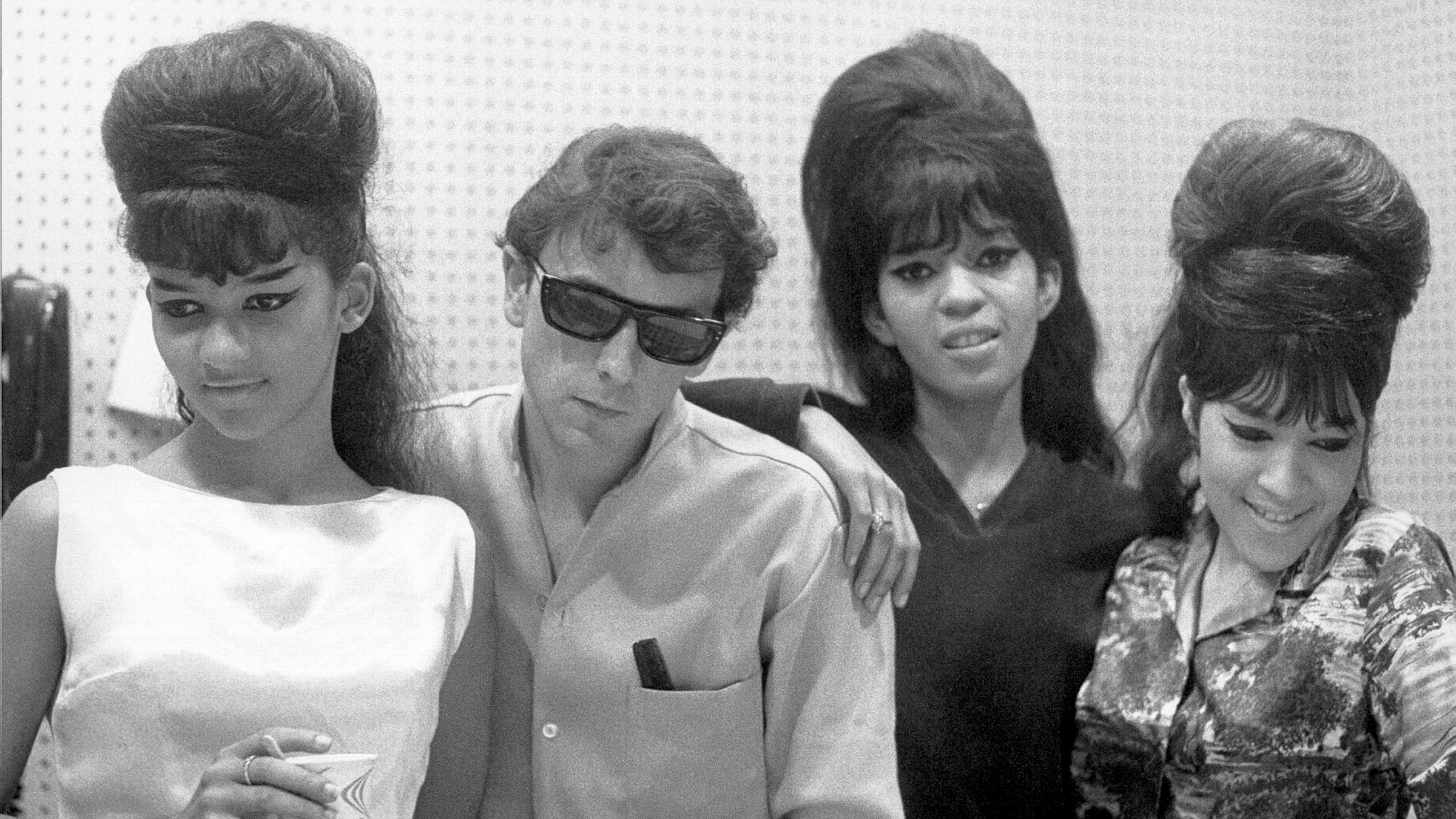There was a time when the late Phil Spector’s name was synonymous only with music production. When he was feted as the maverick pioneer behind the revolutionary “wall of sound” — a phrase coined to describe the method of production he developed to transform unassuming tunes into rich, textured sonic constructions that surrounded the listener until they became almost tangible. It was, in the early 1960s, unlike anything previously attempted in popular music, with Spector himself calling it a “Wagnerian approach to rock’n’roll”.
While the classical cognoscenti may scoff at likening the creator of the Ring Cycle to the man behind a record titled “Be My Baby”,the connection is an apposite one. That 1963 hit for The Ronettes, which marked the apotheosis of the “wall of sound” experiment, was a touchstone musical achievement: a kind of pop ur-text that would go on to inform the compositions of countless artists from The Beatles to Brian Wilson, who equated first hearing the track with a numinous episode (or, in his words: “I balls-out totally freaked out”).
But perhaps a more interesting comparison is that since 2009 — when he was convicted of murdering the actress Lana Clarkson at his California mansion — Spector has been subject to the same debate on whether evil compromises genius that has shrouded the work of the notoriously anti-Semitic Richard Wagner. Does Spector’s crime in some way taint the joy elicited by those indelible beatsof Hal Blaine’s drums that open “Be My Baby”?
Spector’s pursuit of “perfect” sound resulted in gruelling, marathon rehearsal and recording sessions. For him, the set up of the studio and instruments was as integral to a song as the composition or performance. He demanded a draining 42 run-throughs of “Be My Baby” before giving the green light for the track to be taped.
The melody was an intricate aural collage of mixed and overlaid pianos, pulsing drums, blaring trombone, a full string orchestra, chattering castanets and maracas, all played by a near endless parade of session musicians, who were crammed into Spector’s poky Gold Star studio in Los Angeles like characters in the cabin scene in the Marx Brothers’ A Night at the Opera.
“Be My Baby” became The Ronettes’ biggest hit, although it only actually features the voice of lead singer Ronnie Bennett (later Spector). So much of the song’s impact derives from the then 19-year-old’s strikingly assured performance, which lends Jeff Barry and Ellie Greenwich’s innocent lyrics an imploring, sensual faux-naivety (the melody was written by Barry, Greenwich and Spector). The echoing backing meanwhile boasts vocals from the prolific Darlene Love and a young unknown called Cher.
As is perhaps also the case with Wagner’s “Ride of the Valkyries”, the critical appreciation of “Be My Baby” has arguably been diminished by its cultural saturation. As of 2013, the song had been used in a staggering “3.9 million feature presentations” (according to The New York Times) spanning film intro credits — most notably Dirty Dancing and Martin Scorsese’s Mean Streets — to adverts for erectile dysfunction medication.
A stream of covers has seen the track remoulded into seemingly every genre — from Glasvegas’stortured indie rock effort to Bette Midler’smellifluous iteration, Aaron Neville’sgentle, soulful rendition, Travis’sprolix acoustic recording, Linda Ronstadt’slullaby-like interpretation, and The Beach Boys’ camp TV singalong. But perhaps the best version is John Lennon’s Spector-produced attempt from 1973, which, despite its punkish, irreverent charm, was inexplicably cut from his Rock’n’Roll covers album.
Elsewhere, anyone unfortunate enough to have caught the Jools Holland Hootenanny (the pianist and TV presenter’s annual BBC New Year show) in 2015 would have been treated to a rather strained duet between the host and Ronnie Spector. But there can be few more grating covers than those by the criminally twee Human Natureand Michael Bublé.
And it doesn’t require a particularly fine-tuned ear to recognise the influence of Blaine’s drum intro on any number of records, including Billy Joel’s “Say Goodbye to Hollywood”,Taylor Swift’s “Hey Stephen”and The Jesus and Mary Chain’s shoegaze classic “Just Like Honey”.
But no amount of covers could dilute the singularity of The Ronettes’ “Be My Baby”. And while the spectre of Spector and his crime haunts all of his work, his recent passing perhaps affords us a Barthesian lens (or earphone) through which we can begin to extricate the art from the artist.
What are your memories of ‘Be My Baby’? Let us know in the comments section below.
‘The Life of a Song Volume 2: The fascinating stories behind 50 more of the world’s best-loved songs’, edited by David Cheal and Jan Dalley, is published by Brewer’s.
Music credits: Rarity Music; Columbia; East West Records; Blue Note Records; Craft Recordings; Rhino/Elektra; Legacy Recordings; Recall; Universal Music Group International; Rhino
Picture credit: Redferns
